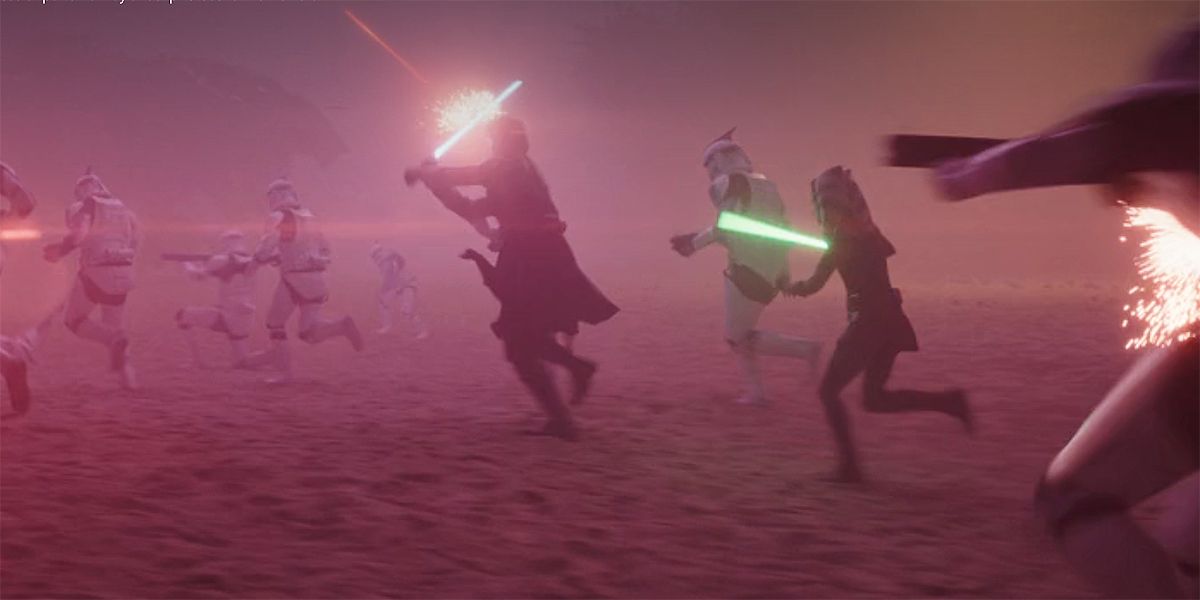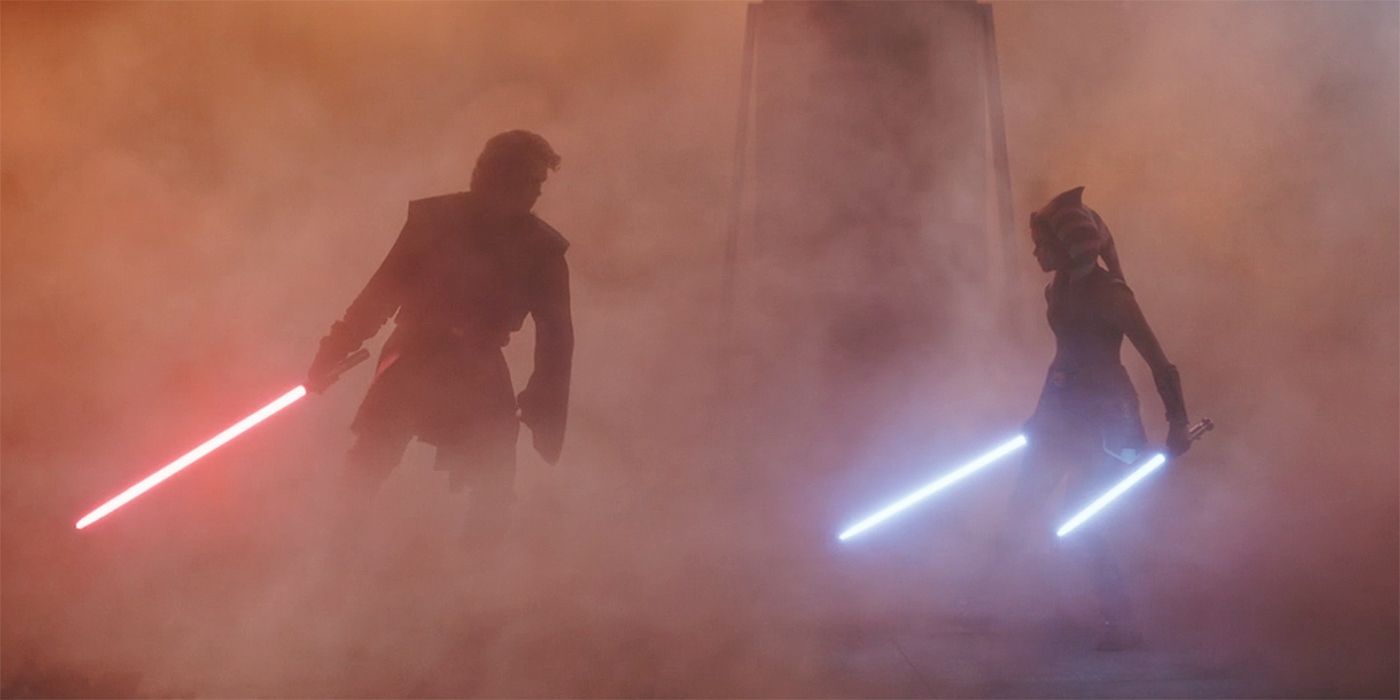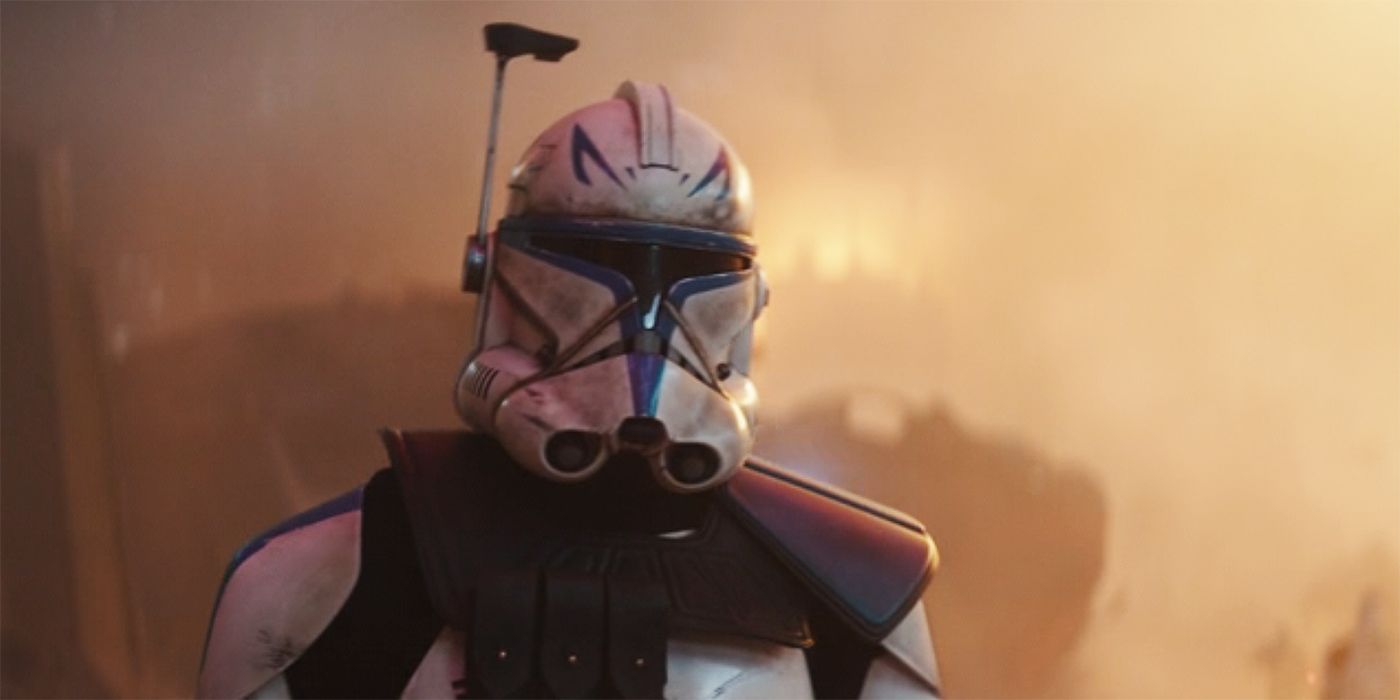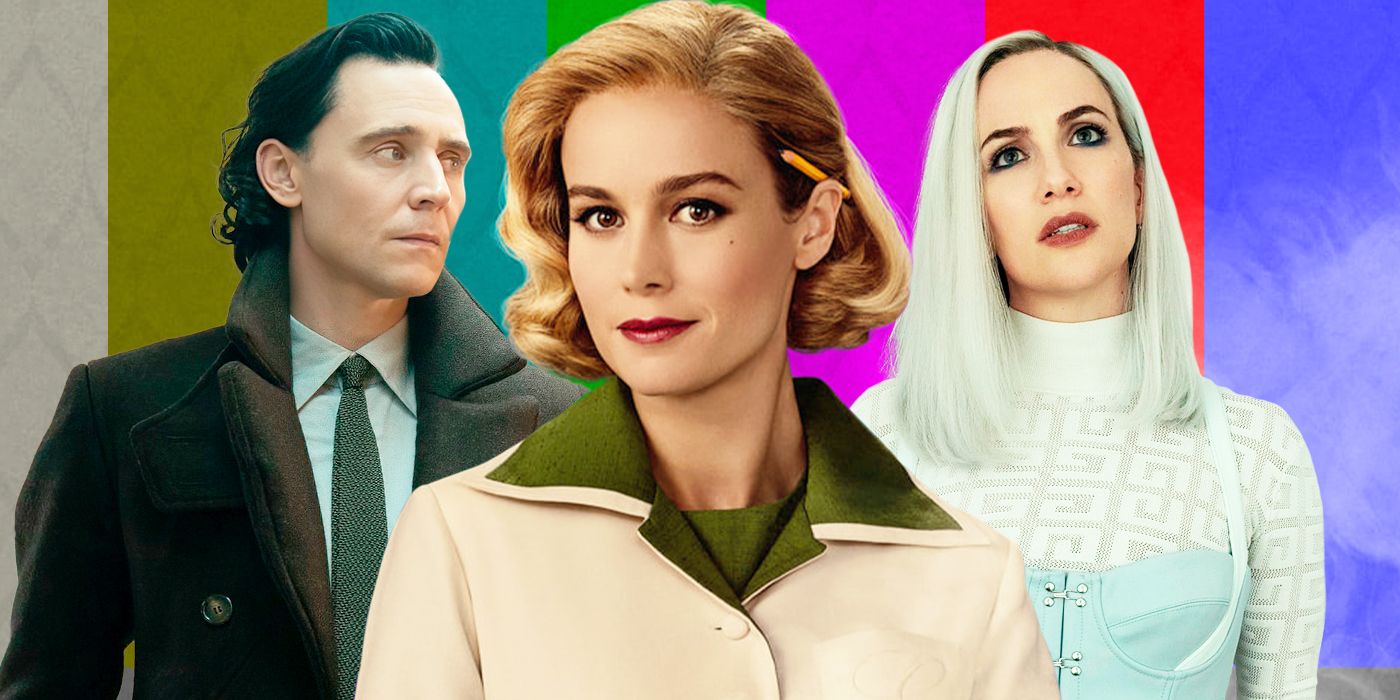Editor’s Note: The following contains spoilers for Ahsoka Episode 5.
The Big Picture
- Ahsoka‘s recent lightsaber battles feel constrained and lack the expansive environment seen in other Star Wars content due to being filmed in the Volume.
- The Volume, while innovative, limits the movement and space for lightsaber duels and action sequences, impacting the overall impact and excitement of the fights.
- Ahsoka‘s fights in recent episodes highlight the need for a more dynamic and expansive approach to lightsaber battles, incorporating larger sets and greater movement to enhance the storytelling.
Some of the highlights of Ahsoka so far have been the great lightsaber battles and action sequences, especially on Episode 4 and Episode 5. There was at least one of those in each episode, and they never failed to impress us with some thrilling directing and well-designed choreography. But still, something about them felt off. As good as they are, they also aren’t as expansive as similar scenes in the Star Wars movies, for example, or even in animated series like Star Wars: The Clone Wars and Star Wars Rebels, and this is a symptom of the fact that most of these sequences are filmed in the Volume, ILM’s famous digital StageCraft technology. The Volume is one of the most innovative tools in film and TV production recently, and filmmakers like Peyton Reed and James Cameron have already used it, Dave Filoni has already said he intends to film as much of his future Star Wars movie in the Volume as possible, too. It consists of a circular studio with high-definition LED panels all along its walls and ceiling, where any sort of scenery can be generated, from the endless deserts of Tatooine to a small chamber inside a starship. Issues like lighting and set designing are made much simpler when conceived taking the Volume into account, but now Ahsoka shows one of the few downsides of this StageCraft technology with its extremely compact lightsaber battles.
How Is the Volume an Issue for Lightsaber Duels and Action Sequences in ‘Star Wars’?
Lightsaber battles are usually the highlight of most Star Wars stories. They are the climax of a story arc, when words can no longer solve anything and the clashing of the blades offers the only possible resolution. This usually comes in the form of stopping someone from doing something or going somewhere, and it’s something so common in the franchise, we don’t really think much about why characters are fighting anymore, we just enjoy it. And we should enjoy it, but if we can give as much thought to how they fight as we do the why, it gets even better, and that’s where Ahsoka‘s recent fights become outliers.
There have been lots of duels in these past two episodes, all very well-designed and choreographed, but the single trait they all share is that there is practically no moving around. In Episode 4, Sabine Wren (Natasha Liu Bordizzo) duels Shin Hati (Ivanna Sakhno) in the same small area in the woods, as does Ahsoka Tano (Rosario Dawson) and Marrok. In the first duel there is even a small amount of jumping and Force-throwing, but never straying too far from where the fight began. Later, Ahsoka takes on Baylan Skoll (Ray Stevenson) and all the fighting happens inside the astral projection of the altar on Seatos, which is also rather small. In Episode 5, Ahsoka has to fight Anakin Skywalker (Hayden Christensen) in the World Between Worlds, but they only move a few steps forward and backwards, and even in the Clone Wars flashbacks there’s very little moving around, too, both in the Ryloth scene and the Siege of Mandalore.
The Volume is 20 feet tall and 75 feet across, and, although we’re terrible with numbers and couldn’t have made an estimate, it’s unlikely that any of those scenes goes beyond these same dimensions. It’s a big studio, for sure, but that’s still very little moving around for such an important part of Star Wars storytelling. Lightsaber duels are a whole different narrative form, and the combatants are not the only characters to play important parts – their surroundings matter just as much as their abilities. In Star Wars: Episode I — The Phantom Menace, the part of the Theed Palace where the “duel of the fates” takes place offers lots of challenges, from characters being thrown off bridges to laser barriers and the final chasm. In Star Wars: Episode V — The Empire Strikes Back, Darth Vader (David Prowse/James Earl Jones) uses all of what’s available to him to make quick work of Luke Skywalker (Mark Hamill) until he corners him. In Star Wars: The Rise of Skywalker, Rey (Daisy Ridley) and Kylo Ren (Adam Driver) have to deal with the Kef Bir sea and the Death Star wreckage just as much as one another.
In Ahsoka, there hasn’t been anything similar yet. Sure, the whole context is different – for example, Ahsoka wants to grab the map when fighting against Baylan, so that keeps them inside the altar. Also, a 40-minute episode doesn’t offer enough time for people to move around that much, the duels have to be more objective. But still, this gives the impression of a cramped-up fight, making choreography even more important because, otherwise, there would be very little impact to these clashes.
The Volume Can Be a Limitation for Other Types of Big Action Sequences, Too
While lightsaber duels are the climax for individual story arcs, larger confrontations are usually what bring the whole premise of the story to a close. We’re talking about battle scenes on the ground, where wars are fought, and a more physical approach is required when crafting the whole thing. Episode 5 of Ahsoka brings two flashback sequences of the title character’s younger self (played by Ariana Greenblatt) in battles of the Clone Wars that suffer with the same issues as the lightsaber duels.
As a director (and a good one at that), Filoni is clearly trying to convey the sense of chaos that wars and battles are known for. George Lucas himself does the same in Star Wars: Episode II — Attack of the Clones during the Battle of Geonosis, a natural reference to make in most war movies. Only in the movie we could feel the urgency of the situation because the fog was literally all around and combatants were everywhere. Ahsoka reduced a lot this scale, making it clear they didn’t have that much space to move in the first place in both flashback scenes.
Of course, Attack of the Clones is a movie and Ahsoka is a TV series, there are bound to be limitations. But there are good examples of scenes in Star Wars television that make use of open sets in a much more effective way. In The Mandalorian Season 2 we have two episodes that show battles in different ways. In “The Jedi”, Ahsoka duels with Morgan Elsbeth (Diana Lee Inosanto) inside the confinement of her koi pond in the Citadel on Calodan, everything made digitally in the Volume. The following episode, “The Tragedy”, Din Djarin (Pedro Pascal/Brendan Wayne/Lateef Crowder) joins forces with Boba Fett (Temuera Morrison) and Fennec Shand (Ming-Na Wen) to fight a platoon of Imperial forces on Tython. This second sequence was filmed in an open set and provides much a wider variety of techniques and ideas for the characters to move and fight because there is an actual set involved. There are hills where Fennec Shand can hide, wide spaces where defense formation can be taken, and so on.
What Ahsoka has been doing to sort of remedy this limitation is to rely a lot on choreography that’s based on Kendo and the fights in classic Samurai movies. Those are definitely great inspirations to draw from and hit all the right spots with the fans, but it still isn’t enough if done repeatedly as it’s currently being done. As important as those references are for Star Wars, they are not all that make the duels and battles in the franchise as good as they are. Deep down, Star Wars is also fantasy, so there is a lot of room for getting a little crazy when designing lightsaber duels and battle scenes, beyond the physical limitations of the Volume.







